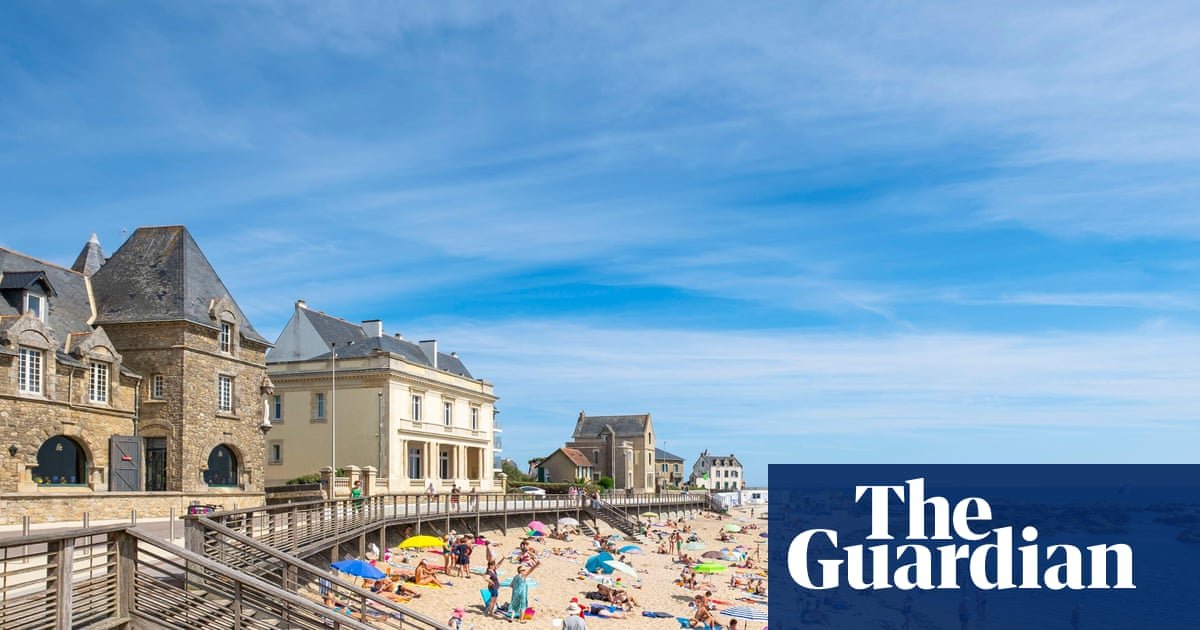Solo Travellers
9 Best Slim Wallets to Keep Cards and Cash Secure

When you’re on the go—whether it’s a spontaneous road trip or a long-haul flight—having the right wallet can make all the difference. The best slim travel wallets are the smart, sleek solution to bulky, overstuffed, and easy-to-lose alternatives. Designed for modern travelers, these wallets combine durability, style, and function. With features like RFID-blocking technology, space for multiple cards and foreign currencies, and even built-in AirTag slots for peace of mind, they’re perfect for anyone looking to keep their essentials safe and secure. And no, you don’t have to be a minimalist to love them—just someone who values smart travel hacks and practicality.
Slim wallets make you more intentional about what you carry—and the best ones help streamline your everyday belongings without sacrificing style. Chic and compact, they slide easily into pockets, bags, or even double as passport holders or iPhone stands. Plus, with high-quality materials, from leather exteriors to aluminum interiors, they’re a long-term investment in hassle-free travel. Lightweight, secure, and effortlessly stylish—read on for 9 slim wallets that keep you moving swiftly, with everything you need right where it should be.
Solo Travellers
My beautiful French detour: the belle epoque charm of the Pays de la Loire coastline | Brittany holidays

The saying goes “curiosity killed the cat”, as if being nosy is a bad thing. As I stood knee-deep in the cool Atlantic Ocean, marvelling at the beauty and emptiness of the Plage de Port Lin, I decided this was nonsense: without this little detour, “just to have a look”, I’d never have discovered Le Croisic, on the Guérande peninsula. The downside is that time isn’t on my side: it’s past 5pm and I’m supposed to be at the big resort, La Baule-Escoublac, six miles east by now. But the presqu’île (a “nearly island”), as the French call it, tucked in the corner where Brittany meets Pays de la Loire, is calling out to be explored.
First, though, a late afternoon dip in the sea is too hard to resist, and I wade into the water, sharing a delighted smile with fellow swimmers. Two elderly women in flowery swimming caps nod a cheery “Bonsoir” as I take my first strokes. Afterwards, I wander up the coast a little way. A row of belle epoque villas overlook the rocky coastline, and I climb down on to the sand in front of them to look west at the enchanting view of the small headlands jutting into the sea and scattered black rocks in silhouette.
Back in the car, I hazard that I have just enough time to do a circuit of the peninsula if I delay my evening dinner reservation in La Baule, and so I follow the coast road west, spotting menhirs, small sandy coves and a golf course along the way. As I approach the town of Le Croisic, there are more people out for a stroll beneath the towering maritime pine trees and I park up again to join them for a while.
At the jetty that usually sees passengers boarding the foot ferry to the islands off the coast, such as Belle-Île-en-Mer and Hoëdic, I notice a crowd of people aren’t queueing, but fishing. Old men and teenage boys are peering over the railings, with nets lowered down on lines; there’s a jolly camaraderie and their chatter carries on the breeze.
In the sea behind them, I spot the Trehic jetty, an 850-metre stone pier that snakes into the bay nearby – its end point marked by a lighthouse – as well as the tip of the Pen Bron peninsula on the other side of the bay, which seems so close it could be within swimming distance. Its proximity reminds me what the two peninsulas embrace: 2,000 hectares (4,940 acres) of marshland and the salt ponds from which the famous Guérande salt crystals are harvested. The thought of sprinkling it on my dinner makes my stomach rumble, and so I head on to La Baule, taking a detour through the main town, along the pretty harbour front with its yachts and quaysides.
After checking into the Hotel des Dunes, I wander out for dinner. There’s a holiday vibe in the town and restaurants are full of families and friends dining together, black-clad waiters whirling between them with trays aloft. I arrive for my reservation at Restaurant Le M (starter, main course and dessert from €18.90), and tuck into briny oysters from Brittany and grilled fish with Mediterranean vegetables.
La Baule-Escoublac first welcomed tourists in the late 19th century, after the opening of the railway line, and became a sophisticated resort. Today, it is a mix of modern apartments, belle epoque-era timber-framed architecture, cafes, restaurants and souvenir shops. Away from the main drags are desirable 19th-century villas shaded by the cypress and pines that were planted in the early 1820s to stabilise the dunes. It is undeniably touristy, but that’s no surprise for a place with such a good beach.
The next morning, I wander down to the seafront and inhale the ozone before wandering along the shore, sitting for a while on the golden sand.
Some 15 minutes north of La Baule-Escoublac is impressive Guérande – its name familiar from the eponymous salt – with its mighty walls, towers, moats and grand medieval gate, La Porte Saint-Michel. Inside, it is a delight: bunting flutters above streets packed with bakeries, arty boutiques and creperies.
The sun is shining, so I take a table in the main square on the terrace of the creperie Chez Lucien and soon I’m tucking into a crispy golden galette complète, with ham, cheese and a gooey egg at its centre, and a cup of cider. I might strictly be in the region of Pays de la Loire, but the identity here is resolutely Breton, and the salt harvested from the nearby marshes has been a key ingredient in Brittany’s famous salted butter for centuries.
To find out more about the fascinating process of harvesting the sel de Guérande, I head out to the marshes. At the shop and visitor centre of the Terre de Sel cooperative (salt marsh tours from €10.50), I meet Simon Pereon, a paludier or salt harvester, who has agreed to show me how he and his 220 fellow paludiers enact the process of salt harvesting between June and September. Salt has been prized in these parts since Roman times, when soldiers were sometimes paid in salt (hence the origin of the word salary), but the marshes as we see them today date from around 1,000 years ago.
As we drive to Simon’s ponds, I start to see the appeal of working under the big skies and open air, and the reason he followed in his father’s and grandfather’s footsteps. “The government classes us as ‘farmers’,” he explains, “but we work with seawater and the whole landscape is balanced between the land and the sea.” With a long, toothless rake called a las, he moves the seawater between a labyrinth of shallow rectangular ponds that don’t drain, due to the clay mud beneath, coloured pink by the algae that thrives here. As the water moves between each pond it becomes increasingly concentrated as the sun evaporates the water and leaves the salt behind.
Simon sweeps the las across the ponds and the water ripples gently: the process is hypnotic. By the end of each day, he has raked the salt into neat piles on the dykes between ponds. “In summer, we harvest 50kg every day. The job has evolved over the years, with tractors and other machines, but for the actual salt harvesting, we still use the identical process that’s been around for centuries.”
The tranquillity has been passed down the ages: I hear little more than the calls from the avocets and ibis in the neighbouring lagoon. “I start at daybreak,” Simon says, “and for the first few hours of the day, I see the sun rise, listen to the birds, and there’s no one around. At the end of the day, too, I just watch the sun go down.”
It sounds like bliss and, after I take another detour later that day through the salt marshes – the clouds in the reddening sky are reflected in the mirror-like ponds – I am reassured that curiosity can only be a good thing.
The trip was provided by Pays de la Loire Tourism; accommodation provided by Hotel des Dunes in La Baule (doubles from €65 room-only). Brittany Ferrieshas crossings from Portsmouth to St Malo from £229 return for a car and two people, including en suite cabin on the outward, overnight leg
Amuse Bouche: How to Eat Your Way Around France by Carolyn Boyd is published by Profile, £10.99. To support the Guardian, order your copy at guardianbookshop.com
Solo Travellers
The only town in the US built for Chinese people

Beginning in 1915, hundreds of Chinese workers settled in Locke, working in nearby canneries and local Delta farms. However, their contributions weren’t limited to labour. Residents established a Chinese school, where most children learned calligraphy and took Chinese language lessons. According to Lee, “This school was not just a place of education, but also a hub of cultural preservation, ensuring that the next generation learned about its Chinese heritage.”
During its heyday from the 1920s to 1940s, Locke was a thriving, culturally unique town with a population of roughly 600 people, most of whom were Chinese. The town included a Chinese-owned movie theatre, six restaurants, nine grocery stores, a hotel, boarding houses and a flour mill. The Sacramento Bee newspaper described it as the “Monte Carlo of California” because its illegal gambling halls operated freely until authorities shut them down in 1951.
Once the Chinese Exclusion Act was repealed in 1943, descendants of Locke’s original Chinese families started moving away, seeking better opportunities in nearby cities. Today, only a small fraction of Locke’s 60 residents are Chinese. Yet, according to Min Zhou, director of the new documentary Voices: Chinese Women of the Delta about how Chinese women helped shape the California Delta, Locke’s real legacy is how “the town successfully provided shelter in the shadow of discrimination, allowing Chinese immigrants to find their way to survive and make a contribution to the Delta”.
As Locke’s population diminished in the 1960s, the exodus didn’t destroy the town. “Locke was always a sustainable place. Everyone knew and respected one another. The friendly interaction among townsfolk provided a social cohesion that remains today,” Lee said. “Some who left have come back to help restore the town.”
Solo Travellers
‘Solo Traveling With Tracee Ellis Ross’ Sets Viewership Record

August 10, 2025
‘The way the show is resonating feels truly special—all of the comments, the conversations, the connection… my cup runneth over,’ Ross said
Tracee Ellis Ross and her series, “Solo” Traveling With Tracee Ellis Ross,” has been picked up by Roku for a second season after becoming the streaming platform’s most-watched unscripted show.
The streaming platform announced that Ross’ series had such an extraordinary debut that, within the first two weeks, it broke viewership records with the channel. The series has become the most-watched unscripted Roku Original for that period in terms of unique viewers, garnering the platform to greenlight another season of “Solo Traveling with Tracee Ellis Ross.”
“’Solo Traveling with Tracee Ellis Ross’ is the #1 unscripted show in Roku history, and now we get to do it all again with a season two! Thank you to Roku for your incredible partnership and care with my show, and to the amazing team that made it all possible,” Ross said in a written statement. “But the biggest thank you goes to everyone who has watched, embraced, and shared my journeys. The way the show is resonating feels truly special—all of the comments, the conversations, the connection… my cup runneth over.”
The former “black-ish” star took off on the road by herself, sparking conversations about traveling alone. During her first season, she took journeys through Morocco, Mexico, and Spain, where she used humor, heart, and honesty on her road trip. Her exploits through the regions have kept fans glued to her escapades. Now, they want more, and The Roku Channel is obliging with the next season on the way, with new destinations being planned.
“Tracee Ellis Ross has set a new gold standard for unscripted storytelling,” said Brian Tannenbaum, Head of Roku Originals. “Her show didn’t just perform—it soared. The response from our streamers has been overwhelming, and we’re deeply grateful to have Tracee returning to guide us through another season filled with heart, purpose, and adventure.”
All episodes will be available for free exclusively on The Roku Channel.
RELATED CONTENT: New Roku Show Spotlights Tracee Ellis Ross As Solo Travel Queen. And Black Women Are Embracing The Movement
-

 Brand Stories3 weeks ago
Brand Stories3 weeks agoBloom Hotels: A Modern Vision of Hospitality Redefining Travel
-

 Brand Stories2 weeks ago
Brand Stories2 weeks agoCheQin.ai sets a new standard for hotel booking with its AI capabilities: empowering travellers to bargain, choose the best, and book with clarity.
-

 Destinations & Things To Do3 weeks ago
Destinations & Things To Do3 weeks agoUntouched Destinations: Stunning Hidden Gems You Must Visit
-

 Destinations & Things To Do2 weeks ago
Destinations & Things To Do2 weeks agoThis Hidden Beach in India Glows at Night-But Only in One Secret Season
-

 AI in Travel3 weeks ago
AI in Travel3 weeks agoAI Travel Revolution: Must-Have Guide to the Best Experience
-

 Brand Stories1 month ago
Brand Stories1 month agoVoice AI Startup ElevenLabs Plans to Add Hubs Around the World
-

 Brand Stories1 month ago
Brand Stories1 month agoHow Elon Musk’s rogue Grok chatbot became a cautionary AI tale
-

 Brand Stories3 weeks ago
Brand Stories3 weeks agoContactless Hospitality: Why Remote Management Technology Is Key to Seamless Guest Experiences
-

 Asia Travel Pulse1 month ago
Asia Travel Pulse1 month agoLooking For Adventure In Asia? Here Are 7 Epic Destinations You Need To Experience At Least Once – Zee News
-

 Brand Stories1 month ago
Brand Stories1 month agoChatGPT — the last of the great romantics







You must be logged in to post a comment Login